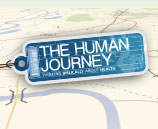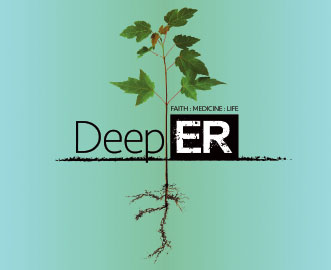There are now suggestions that the rate of improvement in chips is slowing as development starts to run up against the physical limits of silicon technology. Impressive as today's computers are, there is no doubt that they are in many ways puny compared with the power and efficiency of animal brains. While a smartphone has hundreds of thousands of times the memory and processing power of the Apollo computers, they still lag way behind the brains of mammals.
While silicon computers transformed society, they are still outmatched by the brains of most animals. For example, a cat's brain contains 1,000 times more data storage than an average iPad and can use this information a million times faster. The human brain, with its trillion neural connections, is capable of making 15 quintillion operations per second.
This can only be matched today by massive supercomputers using vast amounts of energy. The human brain only uses about 20 watts of energy, or about the same as it takes to power a lightbulb. It would take 34 coal-powered plants generating 500 megawatts per hour to store the same amount of data contained in one human brain in modern data storage centres. [3]
This vast disparity in storage, processing speed, and energy efficiency between animal brains and silicon-based computing means that researchers are beginning to explore the possibility of creating biological computing.
This possibility was brought into focus when Melbourne-based Cortical Labs incorporated brain cells in a computer chip. In a paper describing their research, [4] the team show how they made these first steps in creating a 'synthetic biological intelligence' (SBI). Their 'DishBrain' computer used neurones from both rodent and human sources to create a computing network that learnt to play a version of the classic arcade game Pong.
A biological neuronal network (BNN) like DishBrain offers great potential for more powerful computing as the 'wetware' of neurones integrates with computing hardware using the common language of electricity. DishBrain demonstrated that a BNN is capable of self-organising - that neural development can occur as the computer responds to stimuli and learns to better complete the task it has been set.
This fascinating piece of research represents more than mere scientific curiosity: BNNs really could offer the potential for much faster and more powerful computers, breaking free of the constraints imposed by silicon circuits. As well as massively improved processing power, these neural computers could use far less energy than existing machines. They would be smaller, more flexible, and cheaper to run than silicon-based computers.
But alongside these fascinating possibilities lie substantial ethical questions.
The very name chosen by the Melbourne team is troubling: DishBrain highlights the disembodied nature of what has been created - human neurones, yes, but human neurones operating in a Petri dish culture rather than within a human body.
The researchers report significant differences in performance between different cell sources, with human neurones possessing superior information-processing capacity to rodent neurones. If this is the case, we would expect human neurones to be preferred in future and used in more sophisticated BNNs. How might we feel about super-powerful computers running on wetware comprising self-organising human neurones? And what ethical considerations should researchers and legislators be mindful of as such computers are developed?
The human neurones in DishBrain were developed from a stem line from 'an XY donor isolated from neonatal foreskin'. [5] As stem lines go, this is ethically a relatively untroubling one. But if BNN's are developed from stem lines such as this, we should still ask ethical and practical questions.
For example, what of donor consent? If tissue samples are used in the creation of neural computers, do the donors need to know this and give consent? What rights might donors then have? Presumably, BNNs could be of significant economic value, so might donors expect some financial compensation? What about intellectual rights as synthetic biological intelligence develops? Or copyright if such computers are able to self-replicate?
DishBrain is described by its creators as a first step in synthetic biological intelligence. This raises the question of whether BNNs could develop a form of consciousness. Might they be able to feel pain? If so, would they have some kind of rights analogous to existing human or animal rights? What would be the legal status of such entities?
These ethical questions might feel less sharp if human stem lines were being used to develop, say, cardiac or skin cells that were then somehow incorporated in a computer. That it is neurones being used certainly 'feels' more problematic, even if at a fundamental, ethical level, the questions are similar. The reason neurones will be used is because of their ability to self-organise. It is this neural plasticity that will enable more powerful BNNs to be developed. But does this mean we really could end up with a brain in a dish?
An issue here is the common dualistic tendency to separate consciousness from bodies rather than to speak of humans having embodied consciousness - the 'embodied soul' we see in the biblical account of the creation of human beings. In the popular imagination, human consciousness resides in human brains, and machines that incorporate human neurones might therefore be assumed to have the capacity to develop human-like consciousness. Certainly, AIs are increasingly able to pass the 'Turing test' [6] and give the appearance of consciousness, even if this is only appearance and not reality. [7] It is likely that BNNs would push ever further in this direction.
If computers increasingly incorporate human neuronal networks, and the information they hold is passed from one computer to its replacement, the idea that humans are essentially brains contained in disposable 'meat shells' will be reinforced. This notion, in turn, will have a bearing on other applications of technology in health and on some gender-related issues that society is grappling with. This is one reason why the use of neurones, as compared with other types of cells, feels significant.
So we need to be clear: a biblically framed understanding of humanity would reject the notion that DishBrain represents the first step in creating human intelligence abstracted from the human body. Biblically speaking, human beings can only be understood as embodied souls created in the image of God.
So God created mankind in his own image, in the image of God he created them; male and female he created them. (Genesis 1:27)
This creation was bodily (material flesh and blood), binary (male and female), and self-sustaining (oriented towards reproduction). Human beings are not smartphones whose hardware can be upgraded while the SIM card of the soul is maintained. There is a body-and-soul integrity to men and women which cannot be abstracted one from the other. That we might use the analogy of computing hardware and software to understand human intelligence (just as previous generations used the analogies of the technologies of their day, such as steam power, or clockwork) is understandable. But we are made in the image of God, not the image of a computer.
The fantasies of sci-fi seem to be increasingly being realised, and it is not impossible to imagine that, in time, we will be able to create androids with 'brains' built around a BNN and bodies that are able to interact with the world in a way analogous to how humans do - like Bishop in the movie Aliens. [8] Such creations would be impressive and ethically troubling, but they would not be human. They would still be hardware and wetware, not embodied souls created in the image of God.
Far more likely than such a scenario, however, is that BNNs start to be incorporated into more prosaic computing technology to improve battery life, processing power and memory. Even if we are clear that such computers are not human, we will still need to decide whether their use is appropriate - where on the 'lawful but not beneficial' [9] spectrum would such machines sit?
So long as the stem-cell lines from which neurones are produced are ethically sourced and issues around consent and ownership properly addressed, we might find no particular problem in the use of BNNs. In this case, we might view neurones as simply a type of circuitry. However, it is likely that many would feel disturbed by such computers or troubled in conscience by their use. An analogy might be found in vaccines developed using fetal tissue lines. That there is a direct connection, albeit distant and attenuated, with a real person could cause understandable disquiet.
Another theological line of thought to consider is the general biblical prejudice against one human possessing ownership of another human or even parts of their body. This is seen in a variety of biblical sources, from the rigid prohibition against murder in Genesis 9:6 and Exodus 20:13, [10] to a rejection of prostitution, [11] to the condemnation of slave traders. [12] Within our cultural framework, this Christian legacy has led not only to the abolition of slavery but to the fact that in English common law, no one actually legally owns a dead body. [13] (There was a subtle but significant change in this in May 2020 with the introduction of the 'opt out' register for organ donation.) [14] If BNNs were to develop to the extent that the phones in our pockets contained human tissue; tissue which we own, that would represent a significant moral and legal shift.
For these reasons, and others space does not allow us to consider, we should be extremely cautious about the development of BNNs. As with developments in embryo research, we should wish for governments to be a step ahead of researchers in setting ethical guardrails around the development of such technologies. Sadly, that might be wishful thinking.































